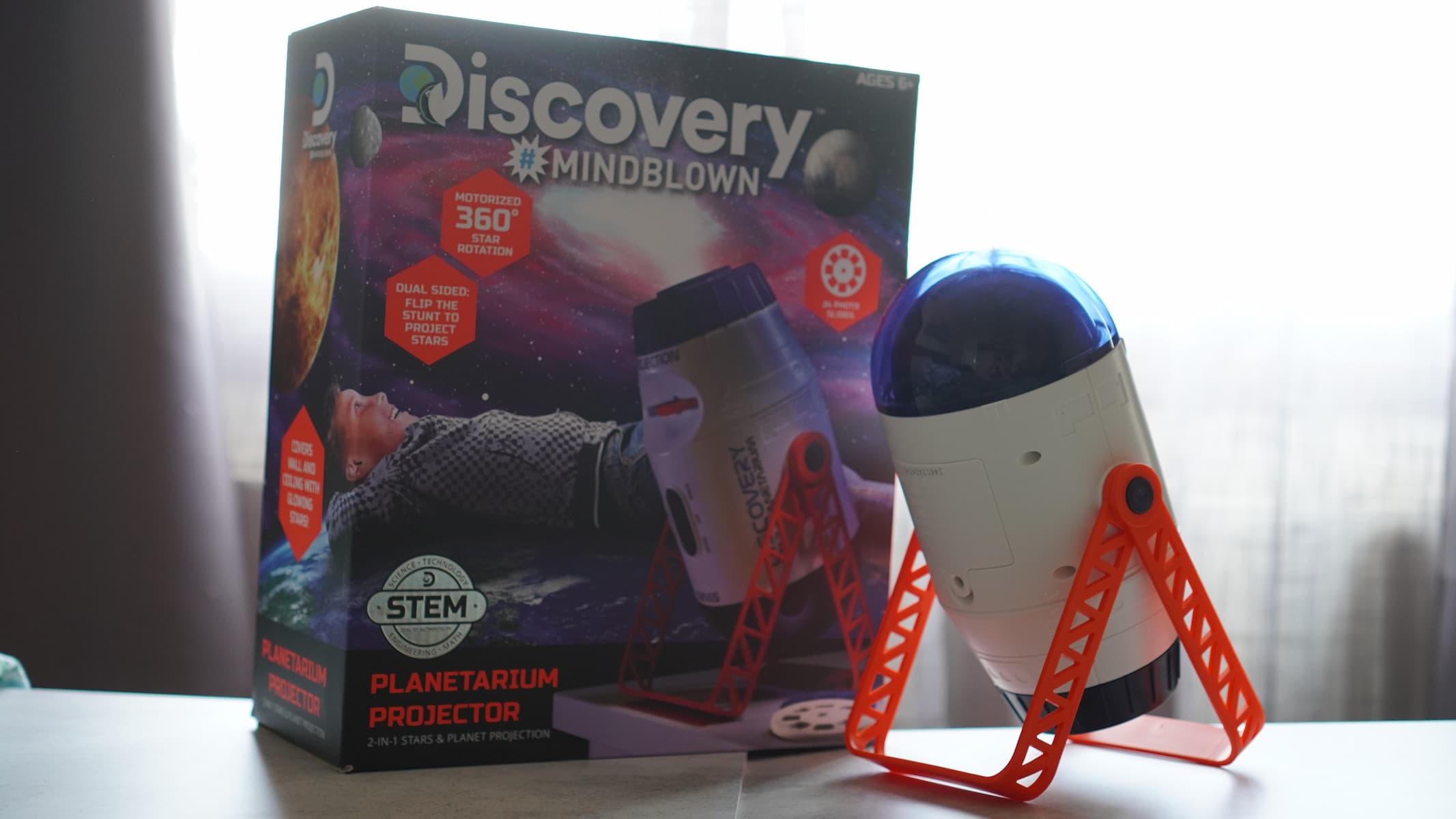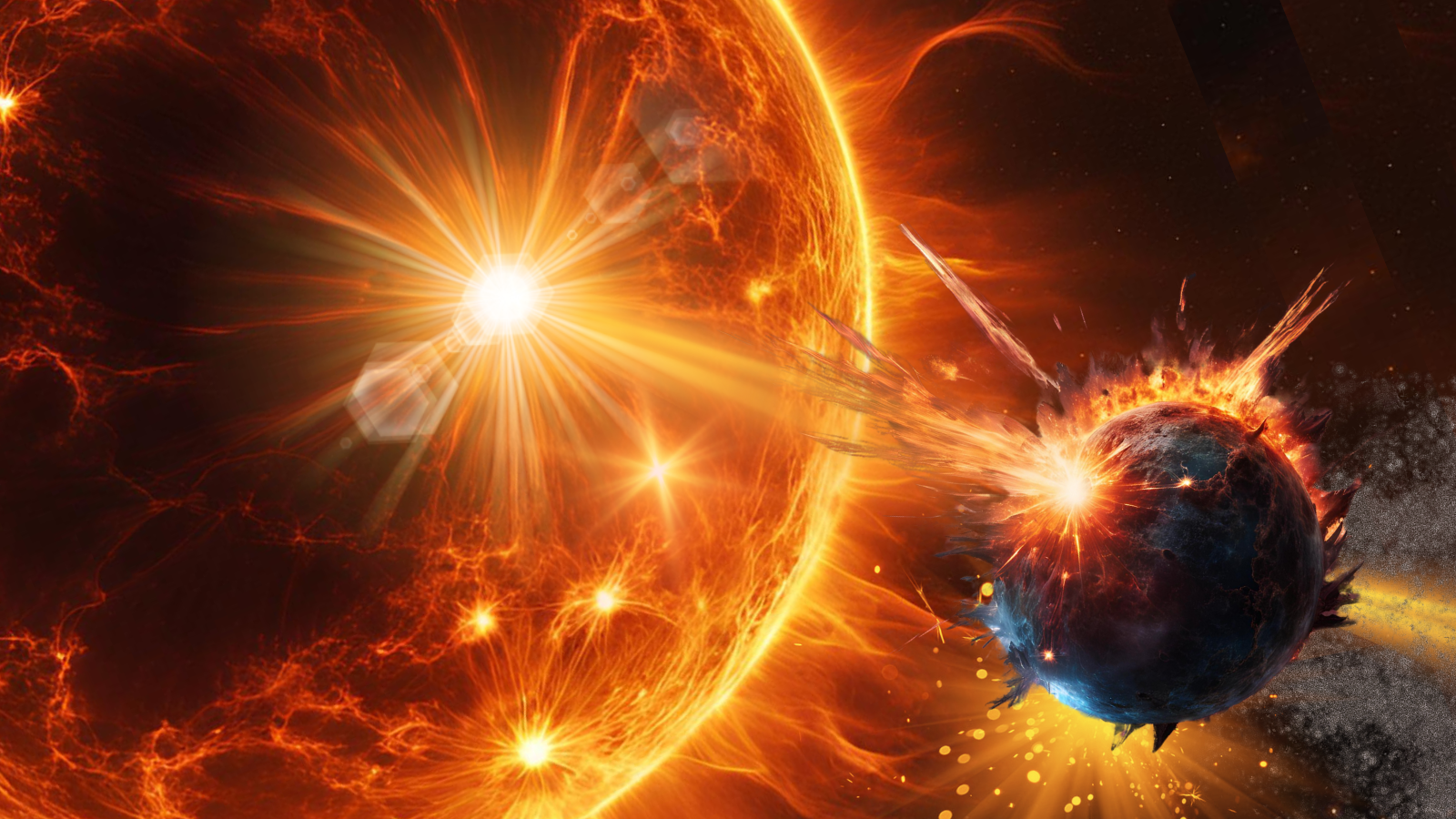Space Verdict
The Discovery Space Projector isn't bad value for around $30. It's a nice-looking projector for kids, but its build quality could be better — and its star projector function leaves a lot to be desired.
Pros
- +
Disk projection mode is good
- +
Great range of detailed, sharp images of planets, moons and other celestial objects
- +
Fun, 2-in-1 design
Cons
- -
The star projection mode is poor
- -
Not the best build quality
Why you can trust Space.com
Size: 5 x 9.5-inches
Weight: 1 lb (453 g)
Bulb Type: LED
Laser: No
Control: On unit only
Rotation: Yes
Sleep timer: Yes
Speaker: No
Having reviewed the Discovery Space Projector back-to-back with the Smithsonian Planetarium Projector, it's surprising just how similar the two are. Their functions are practically identical, just coming in a different body. Both sport a familiar brand name to give them credibility, too, but like the Smithsonian Planetarium Projector, the Discovery Space Projector is lacking where it matters: In its star projector functions.
Like the Smithsonian, this unit is technically two projectors in one. One projects images from a series of disks, while the other fills your ceiling with so-called stars. Also like the Smithsonian, the stars here are blue, blurry and unrealistic. But, you cannot project both stars and disks together: There's a separate projector at each end of the unit, so you need to rotate it to see one or the other.
It's a neat design, but honestly, being able to see the stars and projected celestial bodies together made for a better experience. While it may not be one of the best star projectors on the market, if you're looking for one of the best star projectors for kids, this is a worthy contender, even if it's not the best-performing star projector overall.
Discovery Space Projector review: Design
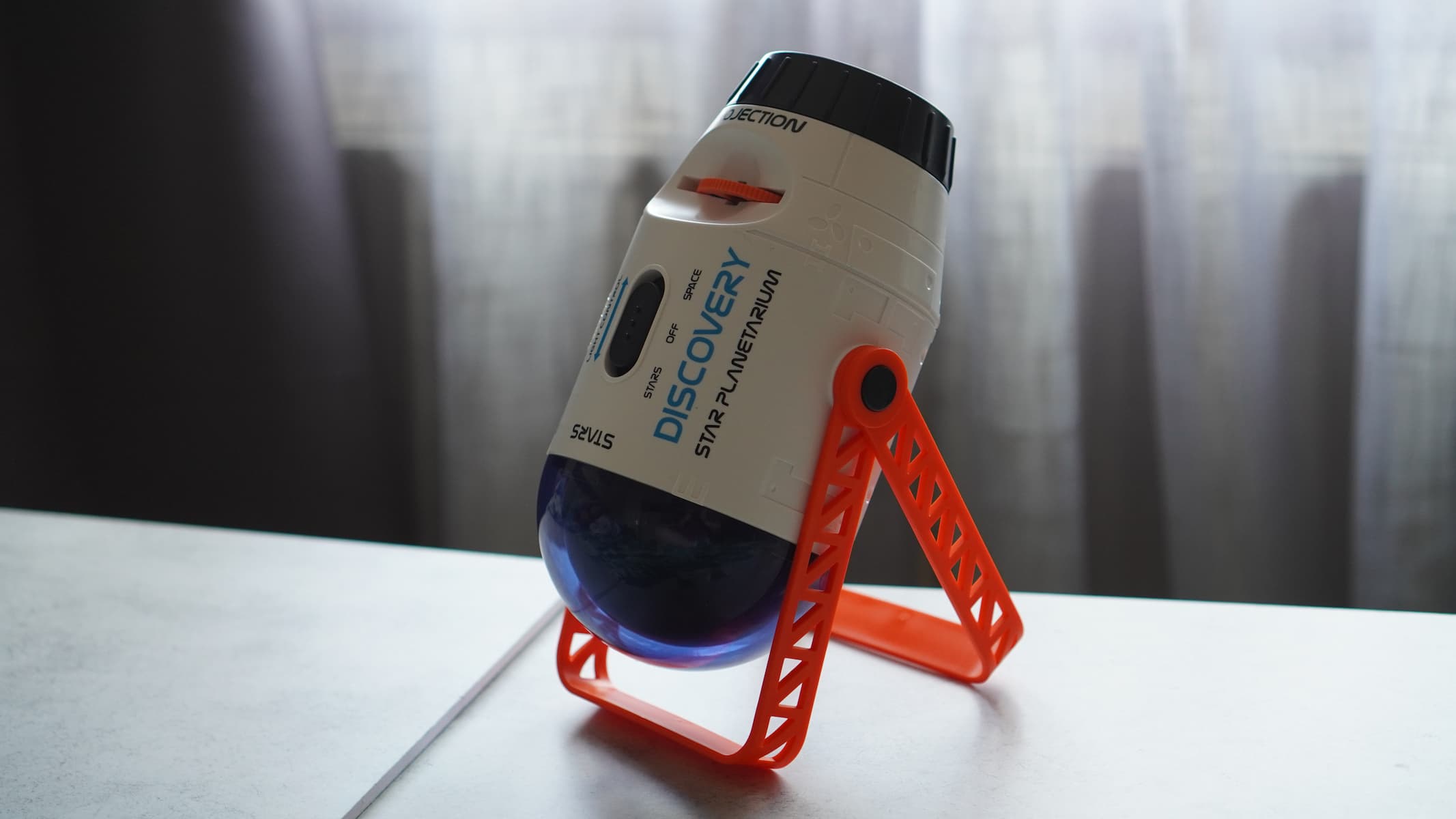
- Cool rotating design
- Can only use one projector at a time
- Very easy to use buttons
Perhaps the best thing about the Discovery Space Projector is how easy it is to use. Its operating switch gives three modes: Star projector, disk projector and 'off'. There's nothing complicated here, so it's perfect for young children to operate by themselves.
It is a shame, though, that because there's a projector at either end of the unit, you can't use both the star projector and a planetary disk at the same time. You need to rotate the unit 180-degrees to switch between the projectors, choosing one or the other. It is a neat design, though, and we appreciate that the unit itself loosely resembles a rocket/shuttle design. It's a design that kids will surely appreciate.
The box of the projector is eye-catching and colorful, sporting the Discovery brand and a STEM logo to get some semblance of authority. The images are perhaps a little misleading, though, showing a child lying under a full ceiling of a nebula — something you absolutely cannot achieve with this projector.
Discovery Space Projector review: Performance
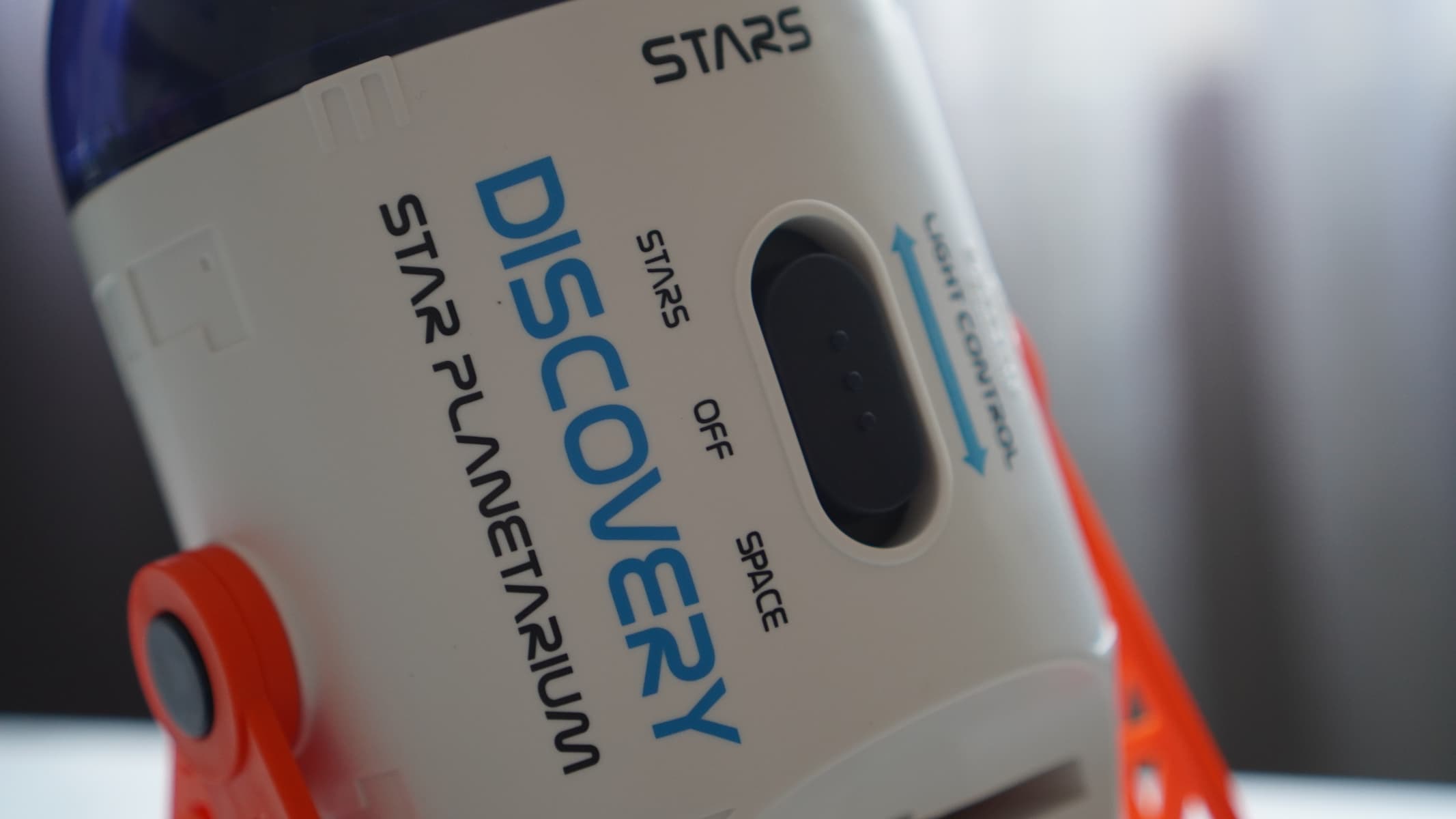
- Interchangeable disks with 24 space-themed images
- Star projector mode is disappointing
- Disk projections are small but sharp
Let's talk about the star projector function of the Discovery Space Projector first. Thanks to a large, domed head over the projector, the reach of the stars is fantastic: it practically covers our entire bedroom ceiling and walls. The downside is that the stars themselves are blurry and blue, not resembling actual stars at all. They rotate slightly, at least, which helps create a fun, relaxing ambience, but that's about it — if you're expecting to find real constellations or a more realistic experience, you'll be best off looking at the Sega Toys Homestar Classic or the Hommkiety Galaxy Projector.
Breaking space news, the latest updates on rocket launches, skywatching events and more!
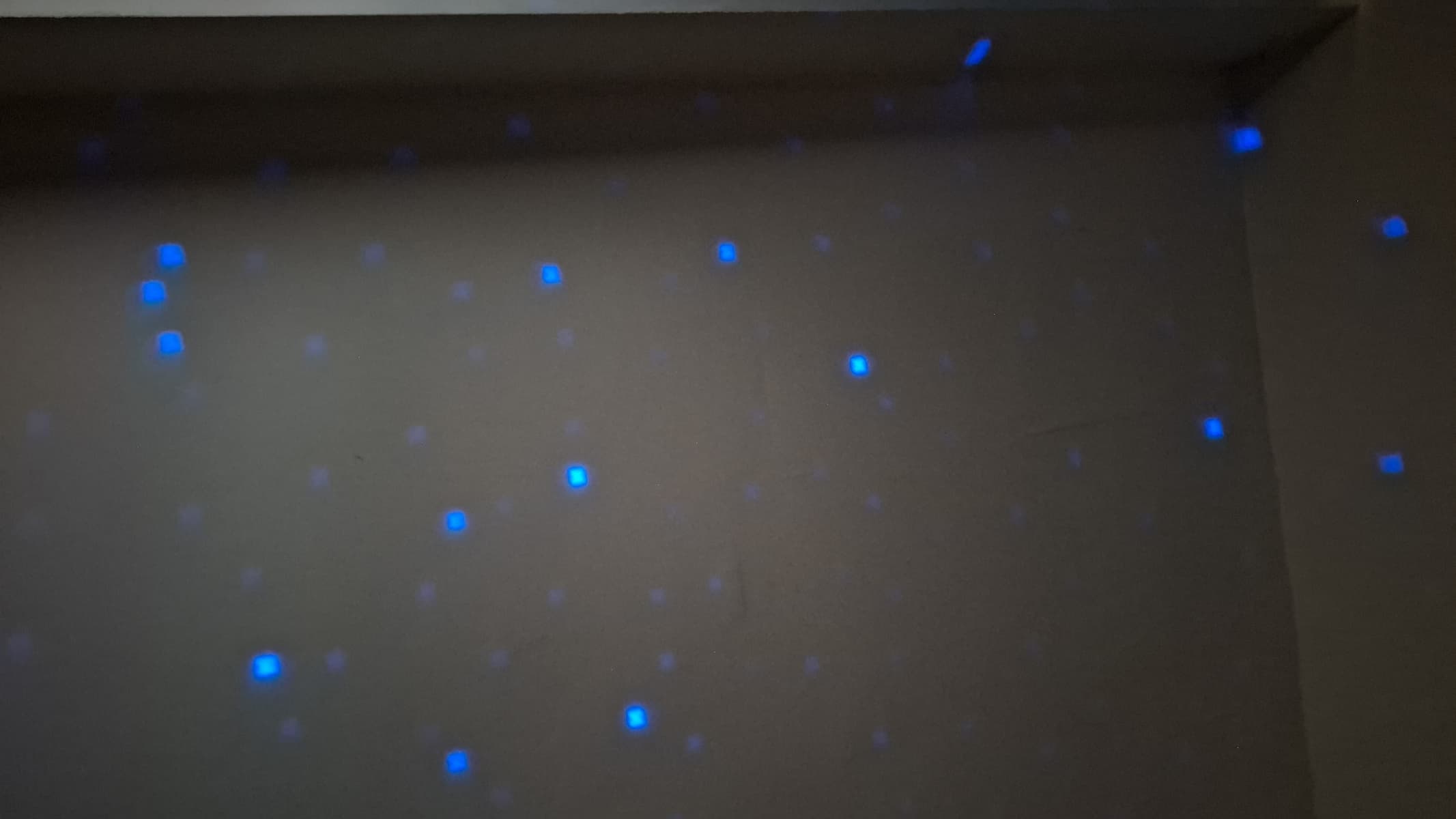
But like we said about the Smithsonian Galaxy Projector, the biggest draw here is the second projector, the one that takes disks. The unit comes supplied with three separate disks, each with eight images on. You'll find planets, moons and celestial bodies here, each projecting on your wall or ceiling with vibrant color and clarity.
You will need to focus the projector by turning its focus wheel, but it's very easy to do (although it can be easy to knock when changing the disks, so you may need to find the focus point multiple times).
Perhaps the only downside is that the images aren't labeled, so knowing what everything is isn't easy. The projector does come with an A3 informational poster, however, so you may need to cross-reference to match up each projection with its title. But if you're viewing with curious kids asking what each planet or celestial body is, you might want to have done your homework first.
Discovery Space Projector review: Functionality
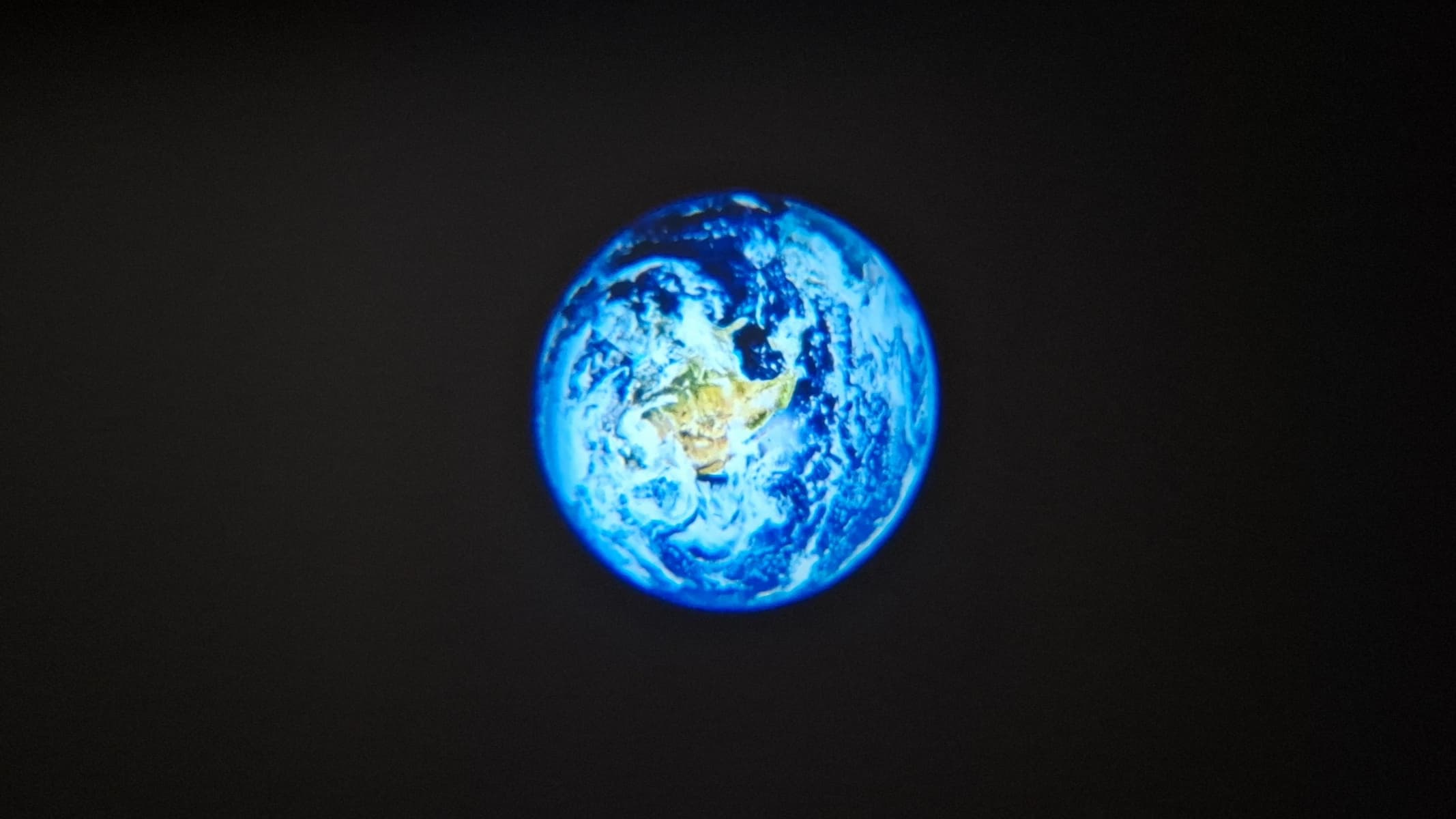
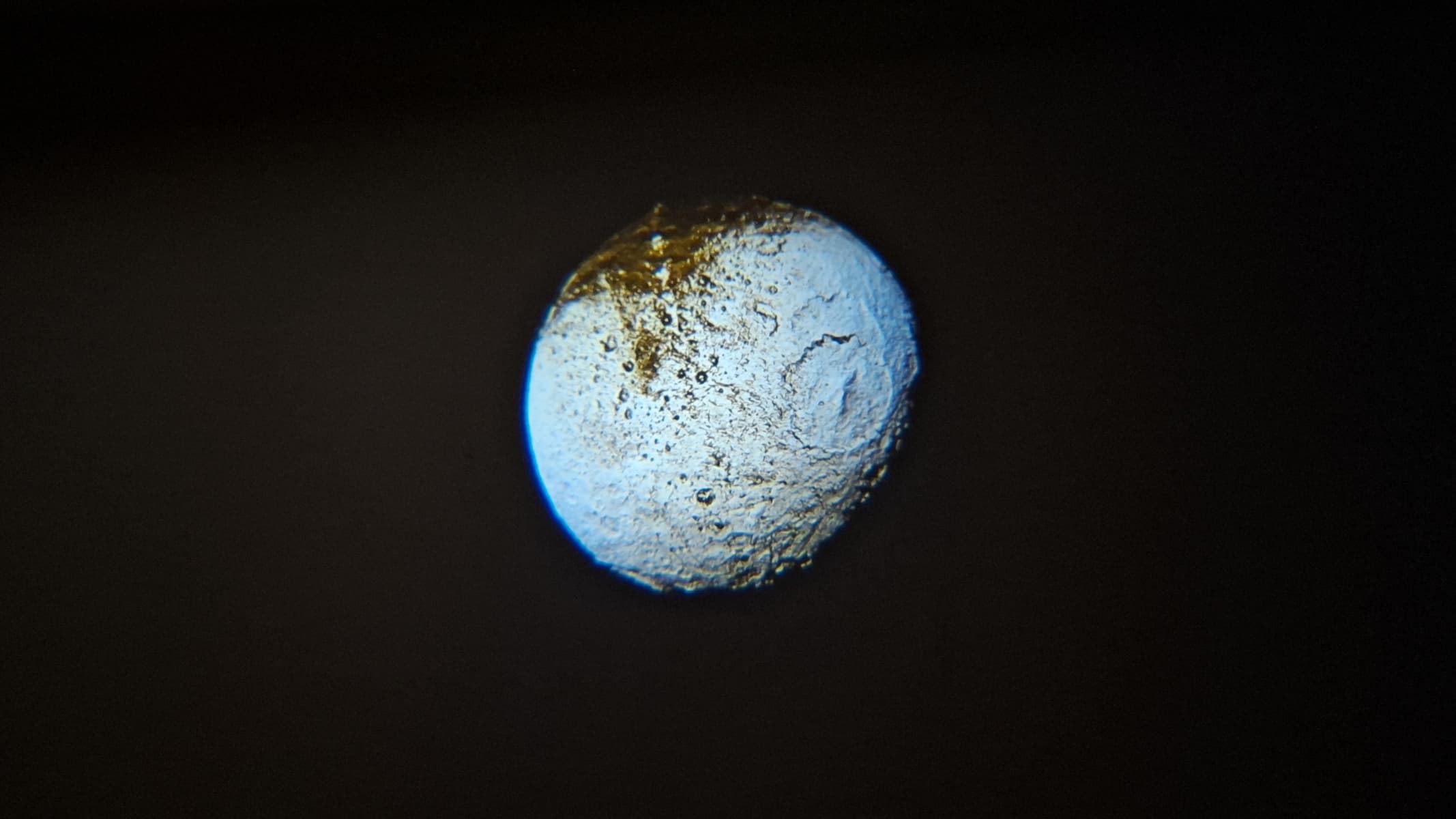
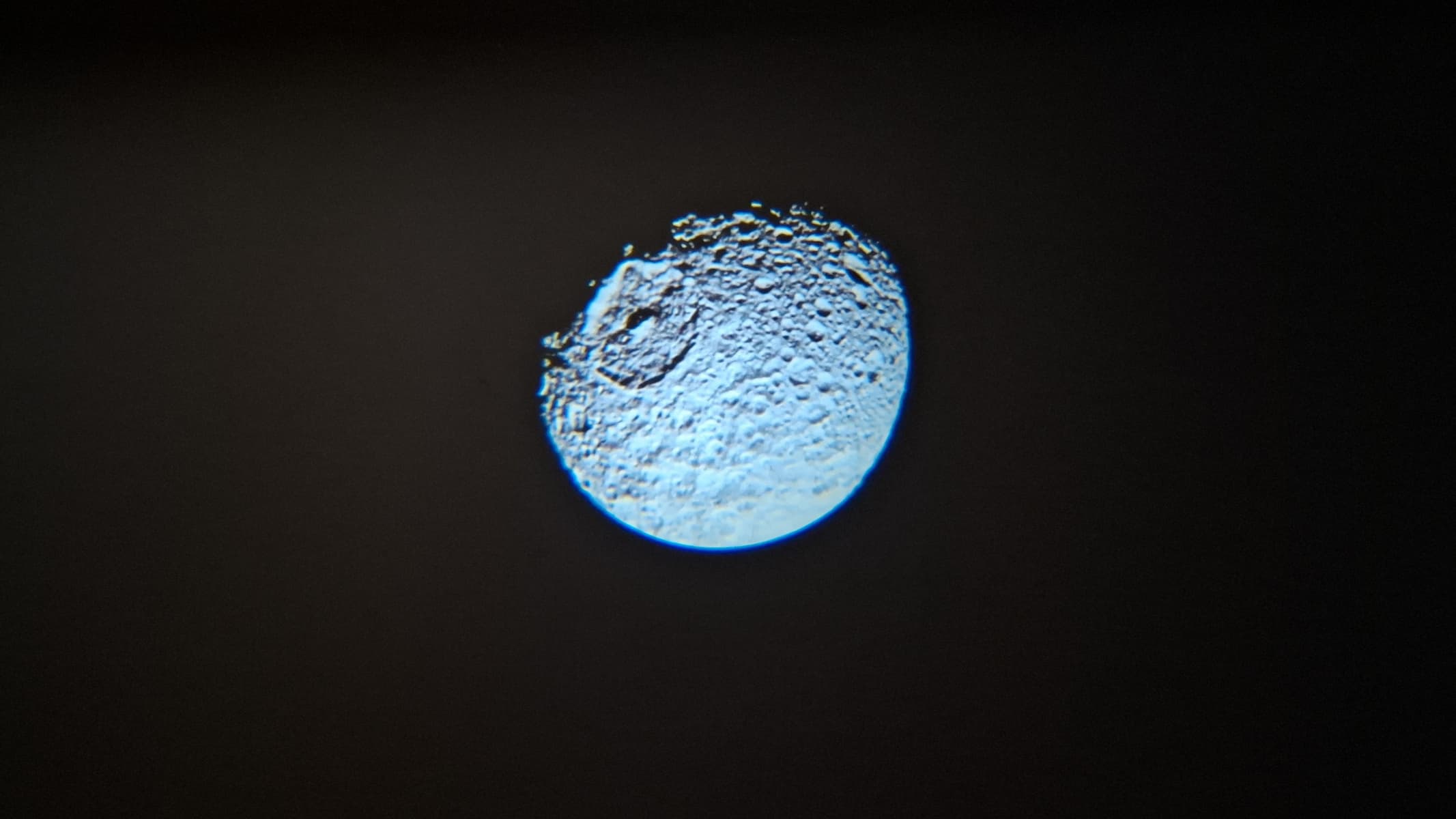
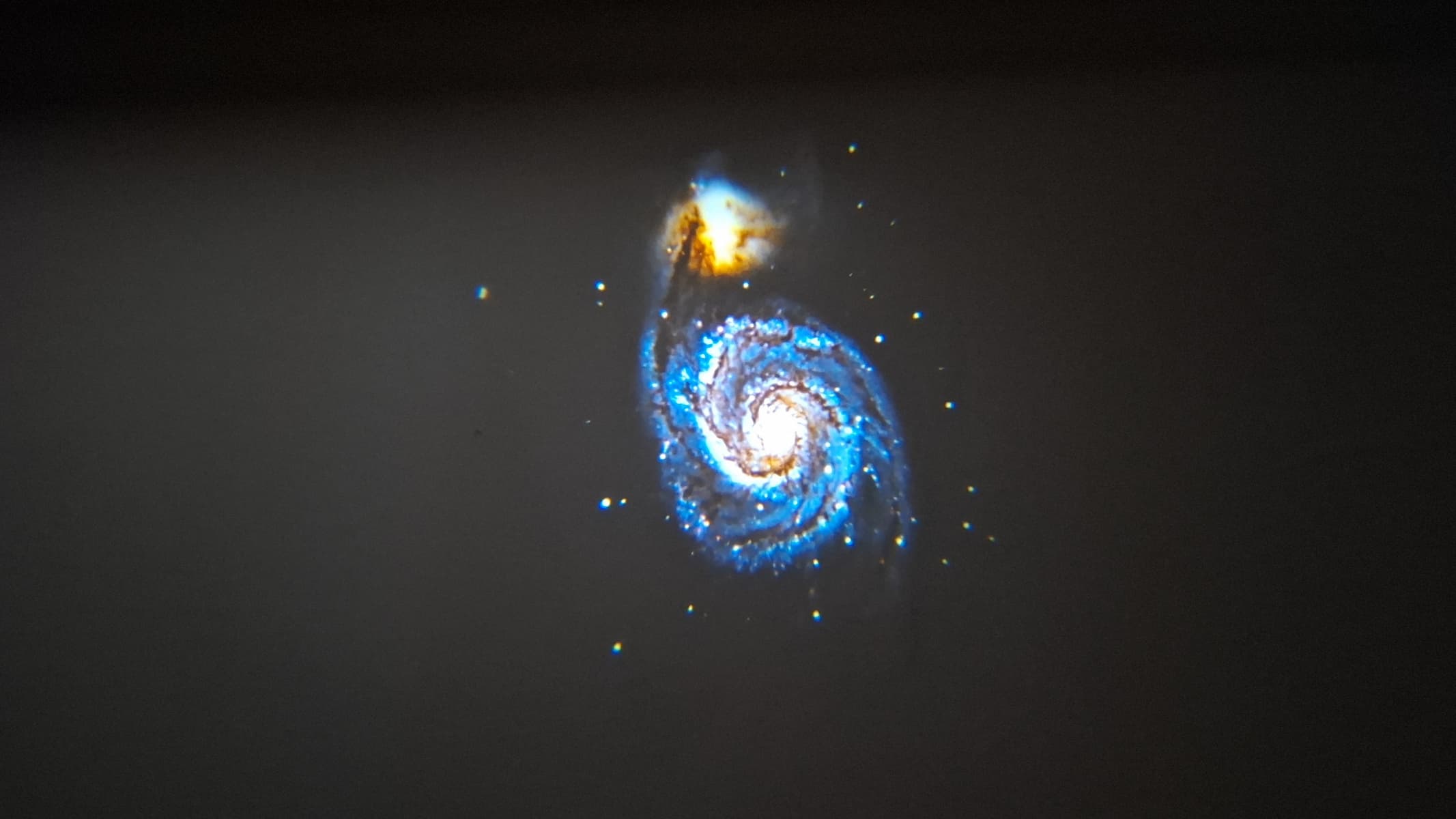
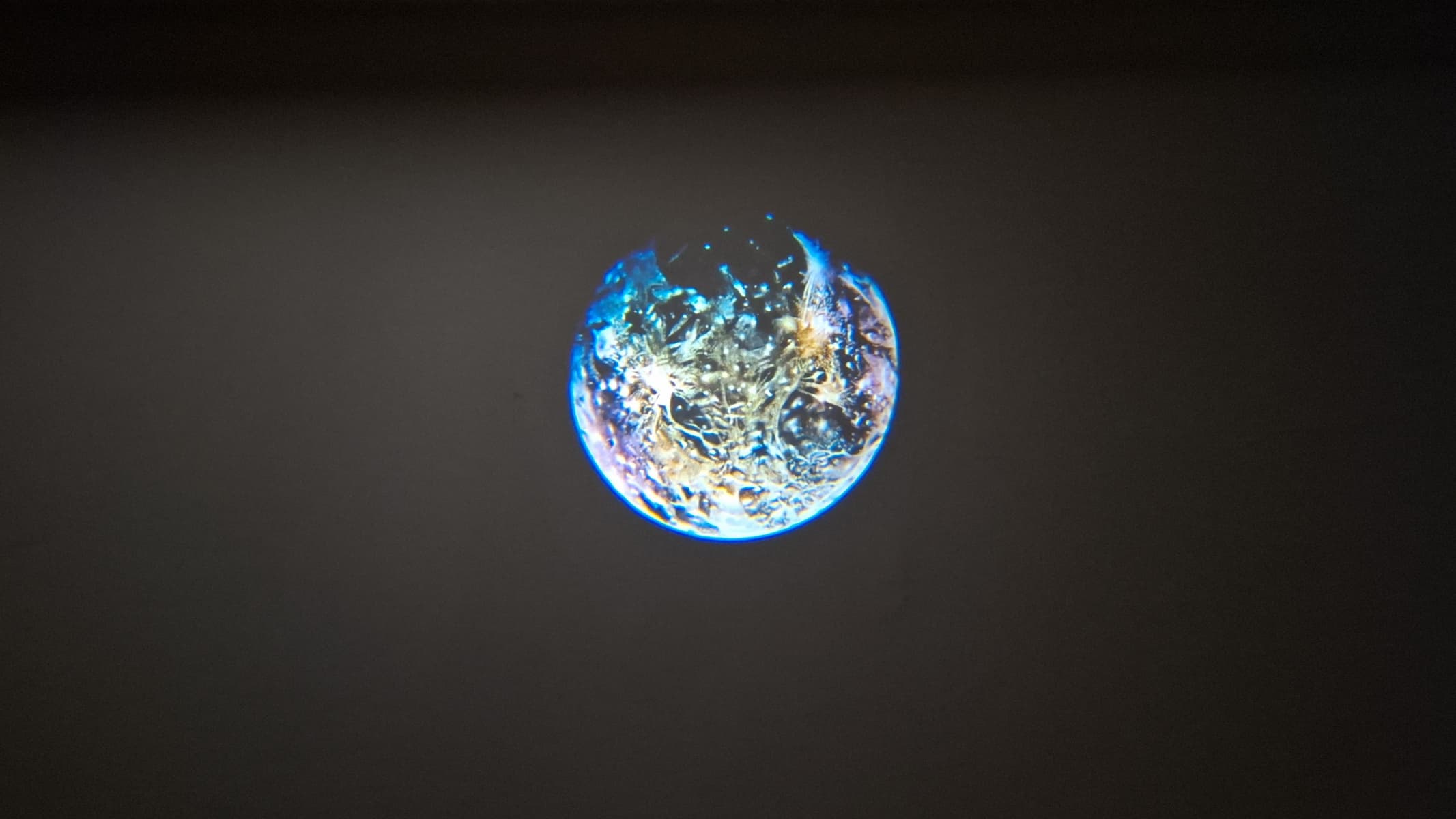
- Battery power only
- Auto shutoff
Don't expect to be able to plug in the Discovery Space Projector to a USB or mains power outlet: This projector is battery-only. It requires three AA batteries, which aren't supplied. You'll also need a small Phillips head screwdriver to access the battery compartment. Exactly how long the batteries last will depend on how frequently you use the projector, but expect to get many nights of use.
There's no manual sleep timer function, but there is an auto shut-off feature, whereby the unit will power itself off after 30 minutes. The star projector function is ideal to drift off to sleep with, so it's useful to know it won't be left running all night long.
In terms of additional functionality, however, that's about it. There's no built-in speaker or any other bells and whistles to speak of.
Should you buy the Discovery Space Projector?
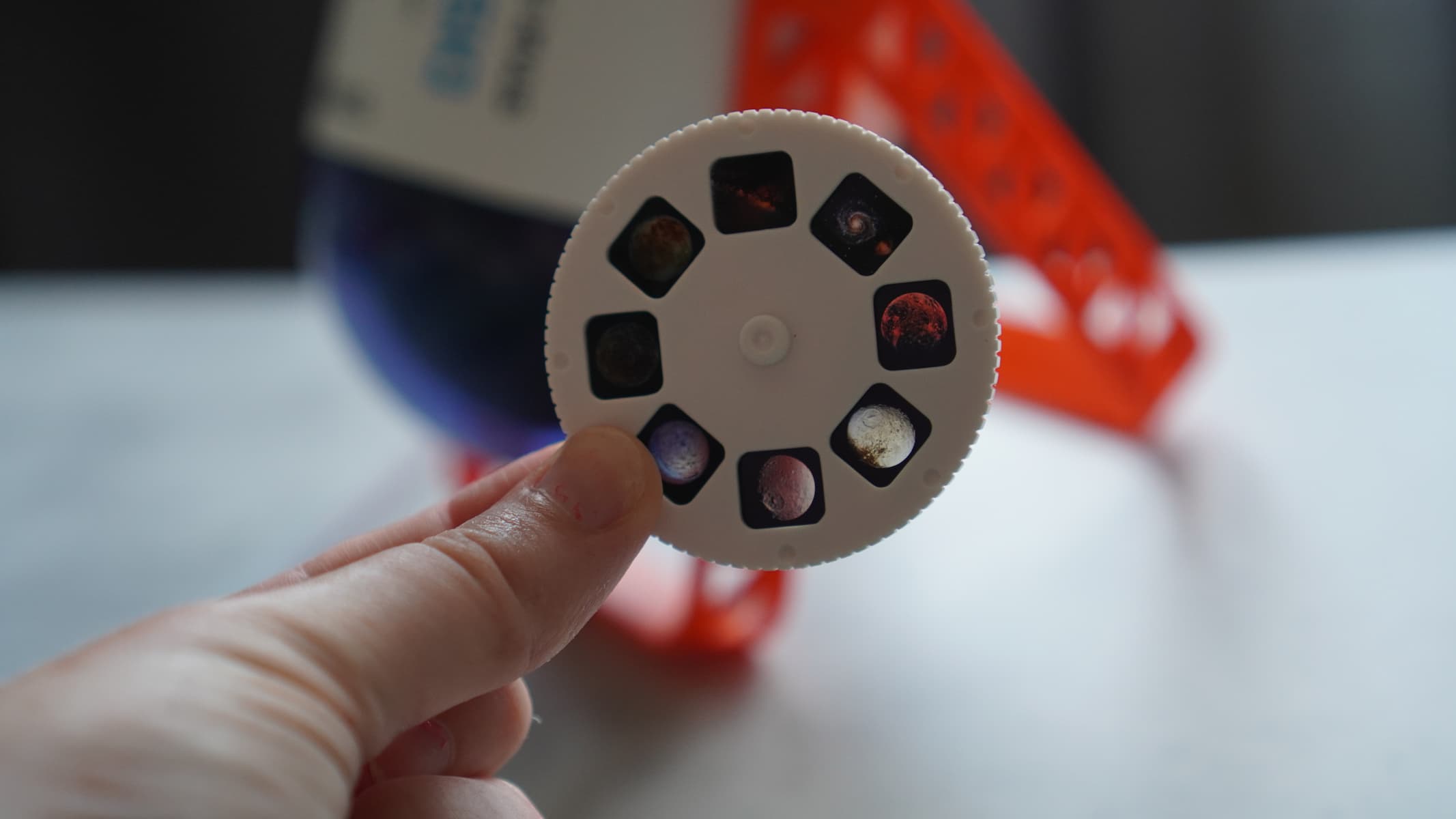
Costing roughly $30, we think the Discovery Space Projector is a solid choice for children. It's being marketed under a reputable brand, so there's some guarantee of quality, and although we think it's a little light and flimsy, it is a cool design that children in particular will appreciate.
The star projector function is lacking somewhat, but the realistic images from the disk projector are wonderfully vibrant and sharp, even if they're not very big.
If you want something that projects better stars, the Sega Toys Homestar Classic wows with its realistic depiction of the Northern Hemisphere — but it does come at a much steeper price than the Discovery Space Projector.

Kim is a Yorkshire-based freelance writer who focuses on Lego and video game-related content. She's the co-creator of GameSpew.com and ThatBrickSite.com, where you'll find most of her work. If she's not building with plastic bricks, playing a video game, or writing about doing either of those things, you should probably check she's still breathing. You can find her on Twitter at @ichangedmyname.
You must confirm your public display name before commenting
Please logout and then login again, you will then be prompted to enter your display name.
